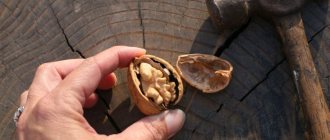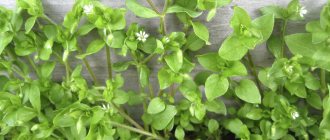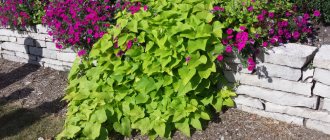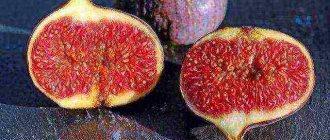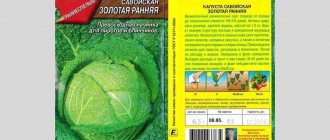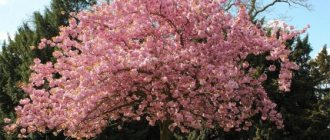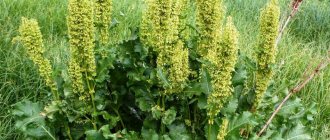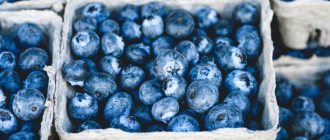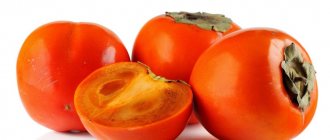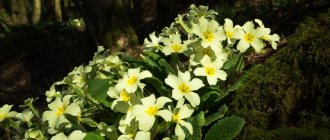Pecan: appearance and description
The pecan is a tree forty meters tall. A thick trunk (at the equator there are trees with a two-meter diameter), the leaves are smooth, long, and the crown is spreading. The fruit resembles a walnut in appearance, but the pecan kernel:
- without partitions;
- does not taste bitter;
- sweet;
- with a thin shell (1 mm).
It blooms in May, is wind pollinated, and can be harvested in October. Loves fertile soil, high temperatures and humidity. Life expectancy is 300 years.
Origin of the fruit and its distribution
Pecan grows in North and South America, and is found in Mexico and Australia, where its beneficial taste and qualities are well known. The Indians stored nuts for future use, in case of an unsuccessful hunt or a hungry winter. They planted trees wherever they developed new habitats.
Now, in addition to being used as food or as an additive to various dishes, hickory parts are used in cosmetology and medicine.
The seeds were brought to Central Asia, Crimea, and the Caucasus. The tree has taken root and is pleased with its harvests, but has not yet received proper distribution. The imported nuts are twice as expensive as walnuts and are not in great demand.
Botanical description
Pecan is a deciduous tree with a spreading crown that prefers a humid subtropical climate. The plant is extremely common in the southeastern part of America, Mexico and Central Asia, and is also found in Spain, Turkey, Russia and Crimea.
Interestingly, as you approach the equator, the diameter of the tree trunk increases noticeably from 50 cm (in the north) to 3 m (in the south). The leaves of pecans are alternate, imparipinnate, consisting of 12-15 opposite lanceolate plates. The crown is symmetrical, reverse pyramidal, reaching 4-5 m in diameter. Pecans are characterized by a straight trunk, reaching 40-60 m in height, covered with fissured light brown bark. The nut budding period is in May, and the mass fruiting season is in October.
Pecans are classified as monoecious plants that produce dioecious flowers (male and female). Considering that staminate buds open earlier than pistil buds, experienced gardeners plant 2-3 varieties of trees nearby. In place of the pollinated ovaries, a smooth oblong fruit appears, covered with a fleshy-skinny shell. As it matures, the “false” drupe becomes lignified and then cracks into four leaves. The length of the ripe fruit is 5-8 cm and the width is 3 cm. Behind the thin peel lies an edible golden-beige seed with a grooved surface.
Unlike walnuts, pecan kernels lack hard internal walls, which makes them less bitter.
Grafted trees begin to bear fruit at 6-8 years of age, and plants grown from seeds - at 10-12 years after planting. These are real long-livers. One tree can produce crops for 300 years.
Kinds
Scientists confidently call the number 150. That is how many varieties of Illinois Caria are known today, but any gardener will say that even trees planted at the same time in one place differ from each other in many ways: trunk length, leaf size, fruit size, yield...
In the USA, the frost-resistant "Indiana" - chocolate pecan - has been grown for two hundred years. The chocolate-flavored fruit weighs 15 g and ripens in October. “Carlson-3” was developed in Canada - it is not afraid of cold weather, the nuts are elongated, light, and tasty.
The busseron pecan nut grows in Belarus. The variety is resistant to frost, is distinguished by early fruiting, and is similar to “Indiana”. The kernels are yellowish, sweet and oily in taste.
Varieties of pecan nuts that are resistant to our winters and spring frosts have been developed especially for Russia. One of them is “Caria core” (the fruits are slightly bitter, which does not affect the quality of the beneficial elements).
Useful and healing properties
Pecan nuts and their beneficial properties were well known to the medieval Indians. They ground the kernels into a paste, made a drink that was given to babies if the mother did not have enough milk, to the elderly to restore health, to soldiers who were injured.
“Time-proven benefits” - this is about Illinois caria or common pecan:
- dietary fiber restores gastric microflora and digestion;
- B vitamins support the nervous system, strengthen the immune system, increase hemoglobin;
- Vitamin E promotes the formation of new cells, slows down the aging process;
- copper successfully overcomes fatigue and apathy;
- phosphorus is “responsible” for the normal condition of dental and bone tissues;
- magnesium has a positive effect on the elasticity of blood vessels.
For men
The benefits of pecans for men are obvious. Anyone who plays sports or works out in the gym is recommended to eat nuts, which contain protein and fatty acids that absorb proteins.
Inside the shell there are all the necessary microelements for normal potency:
- zinc activates the male sex hormone;
- potassium strengthens blood vessels;
- folic acid increases sperm viability;
- vitamins help strengthen neural connections and restore cells of the affected prostate.
Women
It is recommended to include pecans in your daily diet:
- Vitamins accelerate cell regeneration, strengthen nails and hair;
- Selenium will restore brightness to pale, dull skin;
- Magnesium gently “calms”;
- Oleic acid suppresses breast cancer cells.
Walnut-based cosmetics fight the first signs of aging and prevent the appearance of new wrinkles.
A healthy snack with nuts will “suppress” your appetite, help you hold on until your main meal, and will benefit your beauty and slim figure.
For children
Beta-carotene in the kernels will support the child’s visual acuity, B vitamins will improve his memory and attentiveness, phosphorus will form muscles and ensure normal bone growth.
To old people
Pecan, the benefits of which for mature people are obvious and every elderly person should know how pecan is good for him. Carotene will reduce the risk of developing cataracts; it is completely absorbed in the body and prevents the occurrence of dangerous ophthalmological diseases.
Vitamins PP have a positive effect on the activity of the heart, reduce blood pressure, and strengthen the walls of blood vessels.
Magnesium reduces the risk of stroke.
Drinks made from pureed pecans improve overall well-being; antioxidants will preserve vitality and preserve youth.
Pregnant and lactating
Pecans are not recommended during pregnancy. Vitamins and microelements in its composition can cause allergic manifestations in the unborn baby.
Pecan on a diet and weight loss
Yes, it is the fattest of nuts, but when used correctly it fights excess weight.
It is known that losing weight means limiting yourself in food, which causes discomfort and nervous tension. A small amount of the product contains a sufficient amount of vegetable protein and fiber to suppress appetite and induce a feeling of fullness. When losing weight, doctors advise eating fresh pecans or adding them to oatmeal or kefir for breakfast. You can add crushed nuts to salads instead of oil.
Some special diets for various diseases or health problems require the consumption of nuts. Reducing the quantity and composition of food reduces the availability of minerals needed by the body. Pecan will make up for everything:
- when treating the stomach, limit the consumption of fats of animal origin; nuts contain fatty acids of plant origin;
- with the complete exclusion of carbohydrates;
- for obesity, when the consumption of sweets is prohibited;
- during a protein diet.
Compliance with the daily intake will speed up metabolism, digestion of food, better absorption, and improve the health of the body.
Pests and diseases
Despite the exotic origin of the crop, it has strong immunity and is rarely attacked by insects and pests. The most common problem with this representative of the Nut family is the appearance of fungal colonies on the surface of the bark. This type of mold multiplies during a long absence of sun and a long period of dampness.
They fight the “disease” in different ways: from chemicals to folk remedies.
The following is used as “chemistry”:
- solution of copper or iron sulfate (5%);
- a mixture of water and caustic soda (100 g per 12 liters of water);
- Bordeaux mixture;
- fungicides (Topaz, Forecast).
Adherents of organic farming prefer safe natural remedies:
- baking soda;
- apple cider vinegar solution;
- ammonia solution.
The best way to get rid of the disease is its prevention. To do this, they regularly trim, fertilize and whitewash the trunks before the onset of the first frost.
How many pecans can you eat per day?
Pecans are nutritious, with a special vanilla taste; their benefits for humans have been proven by scientists. There is only one condition - to know how much to use. The norm has been determined. Every day you can eat 7 - 8 nuts (30 g), for those losing weight - 15 g.
Harm
Pecans are an undoubted benefit for all people of any age, but their uncontrolled consumption can be harmful to the body. Overeating leads to nausea, vomiting, headaches, and skin rashes.
It is not recommended to consume fruits if:
- individual intolerance to nut elements;
- allergies to vegetable protein;
- pregnancy;
- breastfeeding;
- diabetes mellitus
Nuts that have been stored incorrectly will be harmful to a healthy person. Their taste and appearance change, and beneficial microelements are destroyed.
Harm contraindications
The danger of the delicacy lies in its high calorie content, which is provided primarily by fats.
Exceeding the daily dose of nuts can lead to various unpleasant consequences:
- indigestion;
- nausea and vomiting;
- allergy;
- headache attacks.
Pecans are contraindicated for people with impaired liver function: high fat content can contribute to the exacerbation of a chronic disease or the onset of an attack. Also, the nut should not be consumed:
- having an allergic reaction to nuts;
- children under 3 years old;
- those suffering from stage III obesity;
- people with metabolic diseases.
How much should you eat per day
The daily requirement of pecans, which will benefit the body and will not lead to unpleasant consequences, is 6-8 nuts.
Fragrant pecan fruits, reminiscent of the taste of walnuts beloved from childhood, are not only an appetizing delicacy, but also a healthy food product that helps improve the functioning of the body.
To ensure that the enjoyment of the delicacy does not give way to unpleasant consequences, it is better to adhere to the recommended dose and give preference to regularity of consumption rather than volume.
How to choose, clean and store pecans
You must purchase nuts in shell; there should be no scratches, dents, or darkening on it. The cleaned kernels are used immediately. In the air, in heat, they quickly lose their beneficial properties. The exception is vacuum packaging, in which nuts remain fresh for several weeks.
Pecans should be stored in the refrigerator in their shell (preferably in the freezer). It is easy to remove the shell from them. The doors are opened with a knife, a nutcracker, or crushed with a hammer. Some types of pecans have a “papery” shell that can be easily crushed by hand.
Storage rules
In order for a fruit such as a pecan to retain all its beneficial and vitamin substances, it should be stored correctly. It is better to purchase fruits in shells that are not damaged or cracked. Moreover, it is easy to clean. If peeled fruits are purchased, they must be carefully inspected before purchasing. The nut must be whole and fleshy.
Such fruits should be stored in closed containers or containers. It is ideal if the temperature is cool. In this case, pecans can be stored for four months. And such fruit is frozen. Under these conditions, it will retain its unique properties for six months.
Application
Pecans are eaten raw or roasted (roasting enhances the vanilla flavor) over medium heat.
It is added to fish and meat dishes, coffee, and sweets. Used in the preparation of bakery products. Goes great with mushrooms, cheese, rice, rolled oats, vegetables and fruits.
Alcohol tinctures of the nut have a general strengthening effect.
Pecan in cooking
There are many recipes for making products with the addition of pecans: muffins with peaches, bananas, pig ears cookies, pies with pears, pumpkin, apples. The baked goods acquire an amazing vanilla flavor, are stored for a long time, and do not lose freshness.
Salad recipe:
Persimmon (2 pcs.), hot smoked trout (300 g), cut half an onion into pieces, add 50 g of chopped pecans, mix. Top with lemon juice to taste and garnish with persimmon slices. If you cut avocado into this salad, you don’t need sauce.
In cosmetology
Regular consumption of pecans means fresh skin, shiny eyes, strong hair, and nails. The body receives the necessary vitamins and microelements so that the reflection in the mirror is always pleasing.
Based on Cariya kernels, scrubs and masks are made at home to maintain beauty on the outside.
Scrubs gently cleanse the skin and do not injure it due to the fats contained in the nut.
Here's one recipe. Mix half a glass of black currants, 1 tbsp. a spoonful of flour with a teaspoon of chopped nuts, add cream. The result is that the facial skin is cleansed and the pallor has disappeared. This scrub is suitable for the most sensitive skin.
Masks with pecans and cosmetic clay, dairy products, and fruits are used for the face and hair.
Pecan oil is considered the most famous cosmetic product containing Cariya.
Compound
Pecans are an excellent animal protein substitute that are rich in beneficial nutrients and antioxidants. It is a real storehouse of energy - the calorie content of the product is 691 Kcal per 100g.
The mineral and vitamin composition includes:
- Vitamin B1 (thiamine), which takes part in the breakdown of proteins and carbohydrates;
- Vitamin B2 (riboflavin), which promotes tissue regeneration;
- Vitamin B3 (niacin), involved in the synthesis of fats;
- Vitamin B5 (pantothenic acid), which ensures the metabolism of proteins and carbohydrates;
- Vitamin B6 (pyridoxine), an essential element for the formation of red blood cells.
Ascorbic acid and fat-soluble vitamin K ensure bone saturation with calcium and collagen synthesis. The nut contains antioxidants (lutein, ellagic acid, beta-carotene), which help fight free radicals.
The beneficial properties of the product are due to the presence of macro- and microelements - potassium, calcium, magnesium, phosphorus, manganese, copper, iron, fluorine and zinc.
What is healthier: pecans or walnuts?
The common pecan is not very common in our country; it is sometimes confused with walnuts. The only similarity is appearance.
The outside of the hickory nut is like a walnut, but its shell is smoother, there are no partitions inside, the fruits are elongated, the taste of pecans is sweeter, there is no bitter aftertaste.
In folk medicine, cooking, and cosmetology, walnuts are, of course, more actively used. It is affordable and grows here even in Siberia. To prepare medicinal products, walnut bark, shoots, leaves, fruits and even shells are used. Ointments, creams, tinctures and infusions are made at home and added to various dishes. Kariya has not yet received such popularity.
Scientists argue which is healthier: common pecans or walnuts. They consider the composition of kernels, yield, adaptability to survival, and functionality. There is no clear conclusion.
Grow pecans at home
Pecan trees are rare in our gardens. Varieties have been developed that are resistant to frost, drought, and productive, but have not received widespread distribution. Breeders explain this by saying that gardeners do not know the rules for “working” with an exotic guest. The pecan nut is unpretentious; its cultivation is possible not only in the south, but also in the middle zone.
You can plant seedlings on your site, but if the roots are damaged at the slightest level, they will die. The planting hole should be deep and wide so that the central and lateral roots fit freely into it. The soil must be dug well and fertile soil must be poured into the bottom of the hole. Tie the young tree to a support, and after watering, sprinkle sawdust or last year’s leaves around the trunk.
For grafting, agronomists use white pecans. Tree up to 15 m, with a dense crown, with tasty, aromatic nuts. There is one minus - the thick, strong shell does not split along the “seam”, it is crushed. Grafted plants will produce their first harvests in 4 years.
The most common method of propagation is by seeds. They can be planted in autumn or spring.
In our climatic conditions, seeds germinate better in the spring. In winter, the material for sowing is stored in a cool place, preferably in moist sand. Sprout in warm water for 3 days, plant in flower pots with fertile soil, and water abundantly.
In autumn, seedlings are transferred to the ground in a sunny place, protected from gusts of wind. (Weak plants are left indoors until next spring). In winter, the trunks are protected with canvas from frost and rodents.
At home, pecans are watered, the soil is loosened, and they are fertilized. In winter, watering is reduced and the seedling is placed in a cool place. Caria sheds its leaves, this must be remembered.
pecan tree
Pecan belongs to woody plants of the Nut family, its homeland is the southeastern United States, but today the tree has successfully taken root in Australia, Spain, Mexico, Turkey and the Caucasus.
Karia is a tall tree, it can reach 60 m, it has a wide tent-shaped crown, the diameter of which can reach 35-40 m. Depending on where the pecan grows, the tree develops a wide crown either in the shape of a tent or an ellipse. The straight gray trunk is covered with cracked bark, stratified into plates. The nut has large, up to 0.5 m leaves with a bright green color, smooth and shiny. The lifespan of a tree is about 300 years, and it bears fruit throughout the entire period.
In order for the nuts to ripen, a hot and humid climate is necessary; if these conditions are met, the crop ripens in mid-autumn, and the ripened fruits fall to the ground on their own.
Pecan oil
It is made by cold pressing to preserve all the beneficial properties of the pecan nut. Their concentration increases in oil! This product is used in cooking, medicine, and cosmetology.
When added to various dishes, their usefulness for humans increases: metabolism accelerates, toxins are removed, immunity, teeth, and bones are strengthened.
Microelements contribute to the renewal of damaged cells during burns, tissue regeneration during injuries, restoration of vascular elasticity, activation of brain function, strengthening memory, and healing the body during colds.
Pecan oil is actively used in cosmetology. Miracle drugs have been created on its basis:
- moisturizing creams for dry and sensitive skin;
- sunscreens;
- tonics for the care of mature facial skin;
- therapeutic masks against acne and pigmentation;
- masks for dull hair (regular use strengthens hair follicles);
- massage oil with a relaxing effect (reduces muscle pain during high physical activity);
- ointment that relieves skin itching after insect bites.
